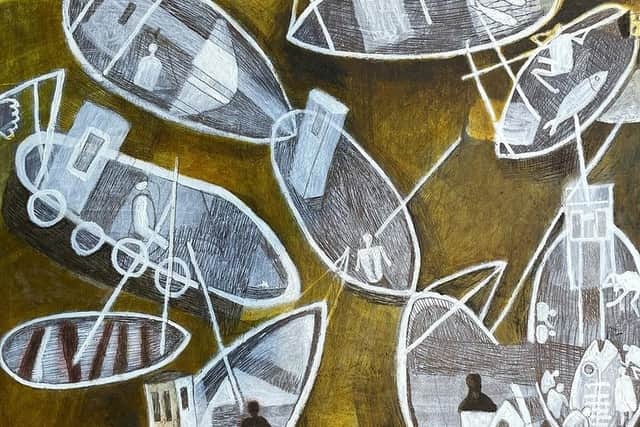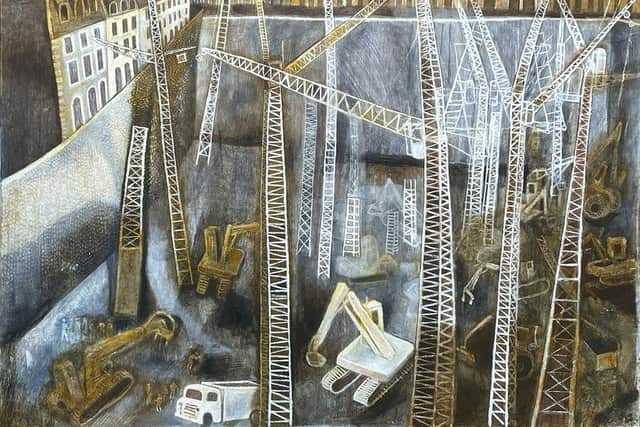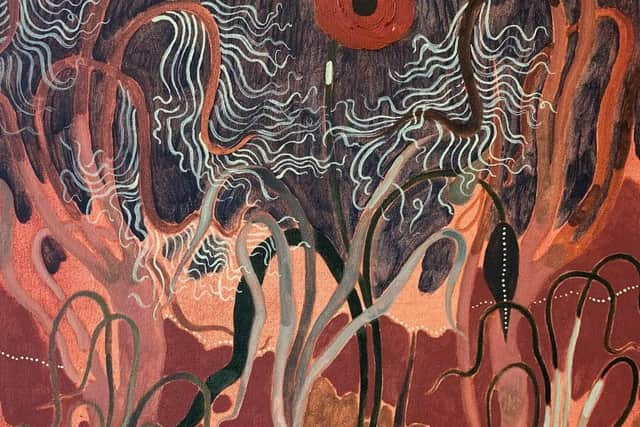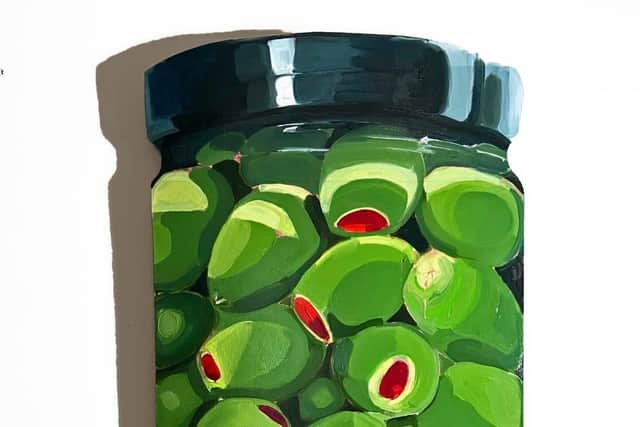Art reviews: Michael McVeigh | Safe as Milk | Robbie Bushe | Rachel Eulena Williams


Michael McVeigh, A Sense of Place, Scottish Gallery, Edinburgh ****
Safe as Milk, Arusha Gallery, Edinburgh ****
Robbie Bushe: Dwell, Open Eye Gallery, Edinburgh ****


Rachel Eulena Williams: Silk Cotton Snow, The Modern Institute, Glasgow ***
Advertisement
Hide Ad“You and I," said Henri Rousseau, sincerely addressing his host Pablo Picasso, "are the two most important artists of the age – you in the Egyptian style, and I in the modern one.” Michael McVeigh is our own Douanier Rousseau. And you could make a claim for his modernity very like the one that Rousseau made for his while relegating Picasso’s Cubism to the Egyptians. Still, there is no easy word to describe the art of either McVeigh or Rousseau. Although their style suggests what we are inclined to label “naive” neither is, nor was, naive at all. Both indeed are or were every knowing, yet neither started from a conventional art training. For that reason, “outsider” might be a better term. Certainly McVeigh’s art seems at first sight to be enumerative, or even literal as he seems to work over a chosen scene detail by detail in a way that is very different from conventional academic drawing. But he simplifies as he goes and the overall result holds together; the apparent naivety often disguises a sophisticated composition which gives his work a very strong presence.
Certainly, A Sense of Place, the title of his current show at the Scottish Gallery, seems apt. There is a real feeling of identity, especially of his views of Edinburgh. Two views from Calton Hill, for instance, looking down at the backs of tall houses in Leith Walk, conjure a striking sense place. So too does a rather lovely painting of Eyemouth harbour. It’s called the Leap because there is a figure jumping off the quay into the water. But his work is informed by the wider world too. In this picture, the colour and the way the water is painted recall Van Gogh. Bright yellow sunlight on the trees in St Cuthbert’s churchyard likewise look back to Derain and the Fauves.
His compositions are often complex, too. The compositions of two views of Johnston Terrace capture its verticality beautifully. In a picture simply called Harbour, the hulls of the boats seen from above make a pattern like so many leaves, but, following Picasso’s Cubist-Egyptian style, their superstructures and the people in them are seen from the side. Technically his work is inventive, too. Castle Esplanade, for instance, is in a mixture of oil and crayon on canvas giving it a very satisfactory sense of weather. Other works like In the First Taxi, people apparently fighting over a taxi, are done on stencil paper. It seems to be a coated paper that he has used like scraper board, drawing into the waxy coating with a stylus or sharp point. The effect is reminiscent of Eric Ravilious’s delicate drawing technique. The Hole at St James, also done this way, is a splendid composition of cranes looming over the huge hole where the Golden Turd has now arisen like some grim monster out of this dark abyss.


There are a few monsters and indeed turds in Safe as Milk at the Arusha Gallery too. The show includes a dozen artists. The principal theme, reflected in the title, is food and what you might call the food pornography of modern life: how, as part of the capitalist exploitation of desire, we are bombarded with seductive food imagery on all sides, but it stimulates an appetite with a promise that is never fulfilled. The turds seem to feature in Georg Wilson’s Delicious Supper, naked people beneath a dark sky both producing and eating their unsavoury tea. Similar eructations appear in the same artist’s Tasty Treat, all very beautifully painted however. Anna Choutova’s Space for Rent seems to be a schematic diagram of a set of working intestines. Her Jarring – Can is a more straightforward painting of food. It is a portrait of a jar of stuffed olives. Both works are also nicely painted. In Sophie Nettle Grellier’s These Heady Days something revolting is emerging from a woman’s nose and, in Bye and Bye, from a woman’s mouth.
Olivia Sterling’s Accidents Will Happen is more slapstick, a custard pies being chucked around the dinner table. There is a subset here about the similar market fetishisation of female beauty. Another work by Olivia Sterling, for instance, is a painfully graphic diagram of hair removal. Two works by Amélie Peace seem to be on a similar theme, too. I Don’t Want This Face Anymore is a painting of a woman literally removing her face like a mask. The same artist’s Heels and Heart is more enigmatic. Two figures are locked in a convoluted embrace. The eponymous heels and an incongruous pair of striped socks poke out beneath. Both pictures are in a beautiful, rainbow palette and in acrylic on paper which gives them great luminosity. These are two of the most striking paintings, but there is much else to see like Lindsay McLean’s Candles, for instance, which seems to go off-piste altogether and into the bedroom to play erotic games with hot wax. It is picture of an arm bearing four burning candles bent over a naked breast. It’s all quite off the wall but a lively show.
At the Open Eye Gallery Robbie Bushe’s Dwell is mostly about houses inside and out. They are seen from a distance, have their walls cut away or their roofs taken off so that we can see all the complexity of life going inside them. There are churches, theatres and supermarkets too, but houses are the main thing. They are feely and vividly painted, but for all their freedom there is a mass of detail. Sometimes, though, Bushe moves in from his usual teeming panoramas to a close-up of an individual room, as he does in Claire’s Room (Glenburn), for instance, Avocado Bathroom (Glenburn) or John’s Visit (Rosemount), and he goes in even closer in to paint a single fireplace in Fireplace (Glenburn.) It doesn’t diminish his usual panoramic vision at all to say that in these close-up pictures you can see how well he paints.
Advertisement
Hide AdFinally, the Modern Institute is showing some rather beautiful abstract collages by Rachel Eulena Williams. I am not sure that she really “pushes the formal boundaries of painting and radical material exploration… beyond its canvas dimensions,” as the blurb claims she does. They are large, richly coloured and richly textured abstract collages, comfortably within the boundaries of a well established form.


Michael McVeigh: A Sense of Place is online at www.scottish-gallery.co.uk until 10 April; Safe as Milk is at www.arushagallery.com until 8 April; Robbie Bushe: Dwell is at www.openeyegallery.co.uk until 24 April; Rachel Eulena Williams: Silk Cotton Snow is at The Modern Institute until 24 April
A message from the Editor:
Advertisement
Hide AdThank you for reading this article. We're more reliant on your support than ever as the shift in consumer habits brought about by coronavirus impacts our advertisers.
If you haven't already, please consider supporting our trusted, fact-checked journalism by taking out a digital subscription at https://www.scotsman.com/subscriptions